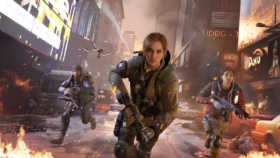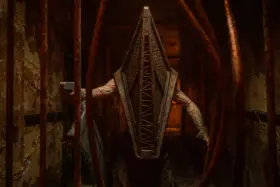Death Stranding 2: On the Beach arrived in June like a thunderclap – big trailers, big expectations, and that unmistakable Kojima energy. Now, two months down the road, the buzz has calmed, the streamers have moved on, and the hype train has long since pulled into the station. But once the noise dies down, one question remains: does it actually hold up?
For those who didn’t dive in right away, On the Beach is the sequel to one of the most divisive games of the last decade. It’s weird. It’s moody. It has long stretches of silence punctuated by philosophical monologues and supernatural horror. But here’s the kicker – it’s also uniquely compelling in a way only Kojima games are. And while the original Death Stranding, which is getting its own movie adaptation, divided players like no other, On the Beach feels like a creator doubling down on everything he believes in – love it or hate it.
Two months later, we’re left with something more revealing than day-one hot takes: the lingering impact of a game that refuses to play by anyone else’s rules.
A Bolder, Stranger Journey – But Still Not for Everyone
From the very start, Death Stranding 2 lets you know it’s going to be a long, strange ride. You’re back in the worn-out boots of Sam Porter Bridges, this time venturing beyond the UCA to the remnants of a shattered Europe. What begins as a quiet courier mission evolves into something far more complex – both thematically and mechanically.
Kojima’s vision is still fully intact: long walks, eerie silence, gorgeous landscapes, and that signature blend of human intimacy and post-apocalyptic scale. The game wants you to feel alone, overwhelmed, and occasionally frustrated. It’s the point. But it also gives you more tools, more systems, and more variety than its predecessor ever managed.
This time around, there’s a greater emphasis on community-built infrastructure and collaborative goals. Players who stick with the game beyond the first few chapters will start to see networks forming, roads being laid, and long-haul missions becoming genuinely enjoyable – not just tolerable.
Weeks After Release, What Sticks?
Now that the launch glow has faded, the real test is how well On the Beach holds up in the long run. And surprisingly, it fares pretty well.
The core gameplay loop – delivering packages, avoiding danger, building connections – remains meditative and immersive. But two months in, it’s the emotional payoff that resonates most. The story starts slow but ramps into something genuinely touching. Themes of legacy, grief, and renewal hit harder now that players have had time to reflect on them outside the chaos of launch-week discourse.
The online elements also reveal their value more clearly over time. Seeing new structures pop up, helping or being helped by strangers you’ll never meet – it still feels quietly revolutionary. It’s the kind of experience that grows richer the longer you stick with it.
Gameplay Improvements That Actually Matter
Let’s talk mechanics. Kojima didn’t just slap a new coat of paint on the original formula – there are real changes under the hood.
Traversal feels better than ever. The new stabilizer system and terrain scanner make rough landscapes more manageable, while customizable exosuits give you extra control over how you tackle difficult areas. Enemy encounters are more varied now, and stealth sequences have been refined so they don’t feel like throwaway segments anymore.
One major win is the addition of proper mid-mission checkpoints and dynamic weather shifts. It adds a level of strategy that wasn’t as fleshed out in the original. You’re not just walking from A to B – you’re navigating unpredictability in smart, adaptive ways.
Boss battles? Still weird. Still long. Still memorable. Kojima hasn’t abandoned his love for over-the-top set pieces, and while some drag a bit, they’re at least inventive and visually stunning.
How’s the Story? Weird, Sad, and Actually Pretty Good
The narrative of Death Stranding 2 is what you’d expect if you’ve followed Kojima’s work over the years: a melting pot of existential dread, personal loss, and oddly specific political commentary. Two months later, the twists and emotional beats are still being dissected by players online, which says a lot about how much depth is tucked into the script.
Without spoiling anything, there’s a strong throughline about healing – not just the world, but ourselves. The performances, particularly from Norman Reedus and Léa Seydoux, bring a groundedness to a game that could have easily spun off into self-parody. Instead, it’s reflective, melancholic, and ultimately hopeful.
The Verdict Two Months Later – Still Worth Playing?
So, is Death Stranding 2: On the Beach still worth playing now that the dust has settled? That depends entirely on what you’re looking for.
If you’re after instant gratification, tight pacing, and constant action, this isn’t your game. It never was. But if you’re down for something slower, stranger, and more emotionally resonant, On the Beach absolutely delivers. In fact, it might even be better now than it was at launch. The online community is more established, the discourse has matured, and players are starting to appreciate the game for what it is – not what they wanted it to be.
It’s not perfect. The pacing issues haven’t magically vanished, and there are still stretches that feel like a grind. But as a sequel, as an experience, and as a statement from one of gaming’s most iconic auteurs, Death Stranding 2 is a triumph in its own weird way.
Still to play it? Now might be the best time. The roads are built, the spoilers are fading, and the beach is calling. Just don’t forget your boots.






